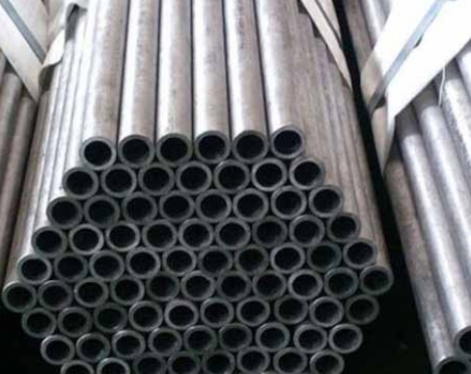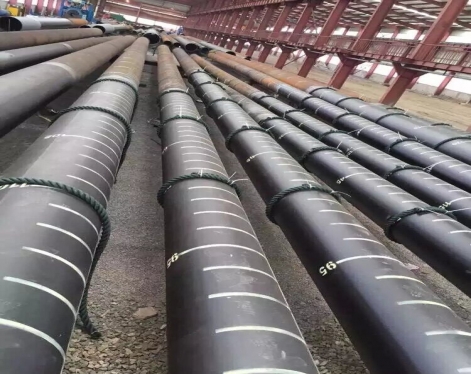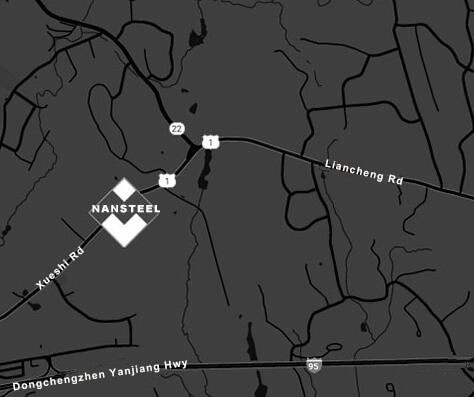Seamless boiler tube is a high-quality carbon structural steel hot-rolled and cold-drawn seamless steel tube, which belongs to the category of seamless steel tube. It is named because its manufacturing method is to form the tube without welds. The manufacturing method is the same as that of seamless tube, but there are strict requirements on the steel type used to manufacture the steel tube.
Compared with ordinary seamless pipes, seamless boiler tubes have higher requirements on material, dimensional accuracy, surface quality and mechanical properties, because they are mainly used in boiler manufacturing and need to withstand high temperature, high pressure and corrosive media.
Advantages of seamless boiler tubes
1. Excellent strength and pressure resistance
Seamless boiler tubes are made from a single piece of steel with no weak points from welds, which gives them exceptional strength. It can operate stably and reliably regardless of whether it is in a high temperature environment or facing strong pressure. In power station boilers, the temperature and pressure of steam are very high. Seamless boiler tubes can withstand such extreme conditions to ensure smooth steam transportation and efficient operation of the boiler. In nuclear power plant boilers, seamless boiler tubes also play a key role, ensuring that the heat energy generated by nuclear reactions can be safely and efficiently converted into electrical energy.
2. Excellent reliability
Seamless boiler tubes have no welded joints, which fundamentally reduces the risk of leakage and damage caused by welding quality problems. This feature enables it to operate stably for a long time in the boiler system, reducing the probability of unexpected failures. In the chemical and petroleum fields, many production processes rely on high temperature and high pressure reaction environments. The reliability of seamless boiler tubes provides a solid guarantee for these key production links, avoiding production interruptions and safety accidents caused by pipeline failures.
3. Good corrosion resistance
In harsh environments such as high temperature, oxidation and corrosion, seamless boiler tubes show good corrosion resistance due to their high-quality materials and special manufacturing processes. This not only extends its service life, but also reduces the high cost and inconvenience of frequent pipe replacement. In some industrial productions that handle corrosive media, seamless boiler tubes can withstand long-term erosion and maintain good working conditions, effectively saving maintenance costs and time and improving production efficiency.

Disadvantages of seamless boiler tubes
1. Higher manufacturing costs
The manufacturing process of seamless boiler tubes is complicated, from heating and perforating the tube billet to hot rolling, cold rolling and other processes. Each step has extremely high requirements for process accuracy and equipment performance, and requires expensive professional equipment. The quality requirements for raw materials are also extremely strict, and the cost of high-quality steel is relatively high. These factors combined have significantly increased the manufacturing cost of seamless boiler tubes. In some cost-sensitive projects, the higher price may become a factor limiting its widespread application.
2. Difficulty in detection
In terms of quality inspection, common defects of seamless boiler tubes, such as internal cracks and inclusions, are difficult to detect easily. Traditional inspection methods, such as ultrasonic inspection, can detect some internal defects, but the detection sensitivity of small defects is limited; eddy current inspection is mainly suitable for surface defect detection and is powerless against internal defects. In order to ensure the quality of seamless boiler tubes, more advanced inspection technologies and equipment are needed, such as phased array ultrasonic inspection, magnetic flux leakage inspection, etc., which undoubtedly increases the inspection cost and technical difficulty.
Summary and suggestions
Seamless boiler tubes have irreplaceable advantages in key scenarios such as high temperature and high pressure due to their excellent strength and pressure resistance, outstanding reliability and good corrosion resistance, and provide a guarantee for the stable operation of many industrial production. However, its high manufacturing cost and detection difficulty cannot be ignored. These shortcomings limit its application scope to a certain extent.
However, in specific scenarios where pipeline performance is extremely high, such as power plant boilers, nuclear power plant boilers, chemical industry and petroleum, the advantages of seamless boiler tubes far outweigh their disadvantages, making them an ideal choice for ensuring production safety and efficient operation.
When selecting and using seamless boiler tubes, it is recommended to consider factors such as cost and quality according to the specific use environment and needs, select qualified and reputable suppliers, and conduct quality inspections in strict accordance with relevant standards to ensure the quality and performance of seamless boiler tubes, so as to give full play to their advantages and safeguard production activities.
Read more: How to Unclog a Boiler Tube?
Compared with ordinary seamless pipes, seamless boiler tubes have higher requirements on material, dimensional accuracy, surface quality and mechanical properties, because they are mainly used in boiler manufacturing and need to withstand high temperature, high pressure and corrosive media.
Advantages of seamless boiler tubes
1. Excellent strength and pressure resistance
Seamless boiler tubes are made from a single piece of steel with no weak points from welds, which gives them exceptional strength. It can operate stably and reliably regardless of whether it is in a high temperature environment or facing strong pressure. In power station boilers, the temperature and pressure of steam are very high. Seamless boiler tubes can withstand such extreme conditions to ensure smooth steam transportation and efficient operation of the boiler. In nuclear power plant boilers, seamless boiler tubes also play a key role, ensuring that the heat energy generated by nuclear reactions can be safely and efficiently converted into electrical energy.
2. Excellent reliability
Seamless boiler tubes have no welded joints, which fundamentally reduces the risk of leakage and damage caused by welding quality problems. This feature enables it to operate stably for a long time in the boiler system, reducing the probability of unexpected failures. In the chemical and petroleum fields, many production processes rely on high temperature and high pressure reaction environments. The reliability of seamless boiler tubes provides a solid guarantee for these key production links, avoiding production interruptions and safety accidents caused by pipeline failures.
3. Good corrosion resistance
In harsh environments such as high temperature, oxidation and corrosion, seamless boiler tubes show good corrosion resistance due to their high-quality materials and special manufacturing processes. This not only extends its service life, but also reduces the high cost and inconvenience of frequent pipe replacement. In some industrial productions that handle corrosive media, seamless boiler tubes can withstand long-term erosion and maintain good working conditions, effectively saving maintenance costs and time and improving production efficiency.

Disadvantages of seamless boiler tubes
1. Higher manufacturing costs
The manufacturing process of seamless boiler tubes is complicated, from heating and perforating the tube billet to hot rolling, cold rolling and other processes. Each step has extremely high requirements for process accuracy and equipment performance, and requires expensive professional equipment. The quality requirements for raw materials are also extremely strict, and the cost of high-quality steel is relatively high. These factors combined have significantly increased the manufacturing cost of seamless boiler tubes. In some cost-sensitive projects, the higher price may become a factor limiting its widespread application.
2. Difficulty in detection
In terms of quality inspection, common defects of seamless boiler tubes, such as internal cracks and inclusions, are difficult to detect easily. Traditional inspection methods, such as ultrasonic inspection, can detect some internal defects, but the detection sensitivity of small defects is limited; eddy current inspection is mainly suitable for surface defect detection and is powerless against internal defects. In order to ensure the quality of seamless boiler tubes, more advanced inspection technologies and equipment are needed, such as phased array ultrasonic inspection, magnetic flux leakage inspection, etc., which undoubtedly increases the inspection cost and technical difficulty.
Summary and suggestions
Seamless boiler tubes have irreplaceable advantages in key scenarios such as high temperature and high pressure due to their excellent strength and pressure resistance, outstanding reliability and good corrosion resistance, and provide a guarantee for the stable operation of many industrial production. However, its high manufacturing cost and detection difficulty cannot be ignored. These shortcomings limit its application scope to a certain extent.
However, in specific scenarios where pipeline performance is extremely high, such as power plant boilers, nuclear power plant boilers, chemical industry and petroleum, the advantages of seamless boiler tubes far outweigh their disadvantages, making them an ideal choice for ensuring production safety and efficient operation.
When selecting and using seamless boiler tubes, it is recommended to consider factors such as cost and quality according to the specific use environment and needs, select qualified and reputable suppliers, and conduct quality inspections in strict accordance with relevant standards to ensure the quality and performance of seamless boiler tubes, so as to give full play to their advantages and safeguard production activities.
Read more: How to Unclog a Boiler Tube?









